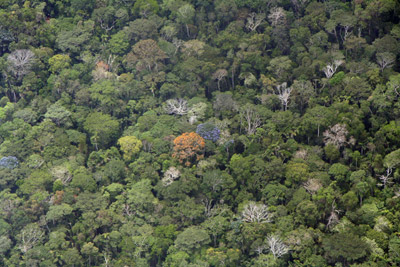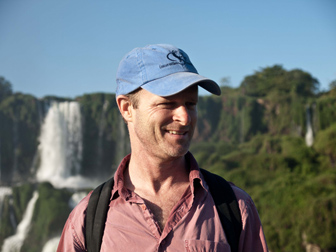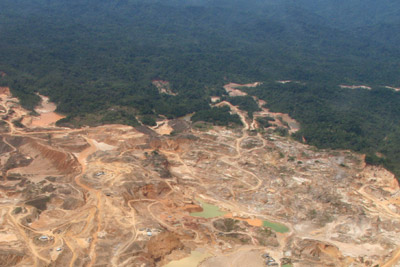When you vote on Nov. 2, remember that Peru is planning to save all of its rain forest.
That’s what I found out recently in the country’s capital, Lima.
By the way, that’s a lot of forest. You may associate Peru with Incan ruins and Pisco sours, but the country actually has a sizable tract of woods. The forests of Peru cover an area larger than the entire state of California.
To reach the zero deforestation goal, a new environmental policy put in place last year calls for innovative payments to indigenous people and peasants, who control around a quarter of the forest, and a mosaic of protected areas and sustainable timber production for much of the rest. Environmental costs are being rolled into environmental impact assessments, and the country is formulating new ways to mitigate and compensate for the effects of big development projects, such as roads and dams.

|
Meanwhile, California is poised to make a headlong leap in the other direction. Proposition 23 on the Nov. 2 ballot would kill the state’s 2006 climate law by permitting it to kick in only if California becomes a full-employment economic utopia of a sort not yet seen on this continent.
While much of the Proposition 23 debate revolves around the important effects here, this policy U-turn could thwart budding environmental efforts around the world, such as those in Peru.
Here’s why. Peru’s rain forests store a lot of carbon. Putting a stop to deforestation globally would cut greenhouse gas emissions by as much as 20 percent. But protecting forests from loggers, farmers, miners and others takes money. The pump of long-term conservation has been primed with money from government and various donors throughout the world. But it’s not enough. The best long-term hope for funding tropical forest conservation is to pay countries modest fees for keeping the carbon in luxuriant foliage rather than sending it up in smoke.
And it’s one of the most affordable tactics available. Our research has shown that Peruvian Amazon conservation could protect carbon at well under a $1 per ton per year over millions of acres, far below the cost of most other methods.
The story in Brazil and other forest countries is similar. California’s greenhouse gas law is written so that some of our emissions reductions could be accomplished in partnership with rain forest nations — by protecting their trees. Our state government has already launched a forest conservation initiative with state governors in Brazil and Indonesia.
By saving forests, we accomplish our climate goals at a lower cost to the California economy, while supporting the groundbreaking environmental initiatives of governments like Peru’s. This kind of solution works because the atmosphere doesn’t care where emissions reductions come from; climate benefits are exactly the same.
 John Reid, author of this commentary, is president and founder of Conservation Strategy Fund, a Sebastopol-based organization that provides economic training and analysis to environmental agencies and non-profits. |
California has always led on environmental policy, but never in the wrong direction. Our clean air and water legislation predates federal laws. The only reason national climate legislation was even on the agenda this year is because California acted first.
U.S. legislation is a necessary stepping stone to commitments from all the other big carbon polluters in the world. Further, the proposed U.S. law would permit funding for tropical conservation on a scale far beyond California’s and never before thought possible.
If we change our collective mind now — and approve Proposition 23 — it sets the whole process back by years. Not just here but all around the world. California will do more damage to the climate and forests around the world by pulling a bait and switch than if we had never acted at all. The climate and our kids will lose. But so will a lot of other species.
Rain forests hold as much as half the life forms on earth, and without a long-term funding strategy, and the example of California’s forward-looking environmentalism, many of those species are going the way of the dodo.
Implementing our climate law is not going to be free, nor will every high school grad have a guaranteed green job. Solving problems costs money, and we have a problem. But sticking with the decision to solve it allows us to keep investing — as Californians are doing — in the most cost-effective solutions, which include energy innovations and deploying the carbon chomping forests, here and abroad.
Conservation Strategy Fund
Related articles
Conserving nature with economics

(09/29/2010) While many factors come into consideration when the fate of forests are being determined, economics often play a key role in land use decisions. When the perceived value of forest land is higher as cattle pasture, cropland, or plantation, then trees fall. But what happens when economic assumptions underlying these decisions are wrong? Forests, including the services they provide and the biodiversity they shelter, are lost in vain, much to the detriment of society and the planet. Working to avoid these costly outcomes is the Conservation Strategy Fund (CSF), a California-based nonprofit that trains conservationists to use economics and strategic thinking as assets to conserve natural ecosystems in countries around the globe. CSF runs training programs that help emerging conservation leaders build and strengthen parks, influence policies, and avert damage from infrastructure projects.
in
